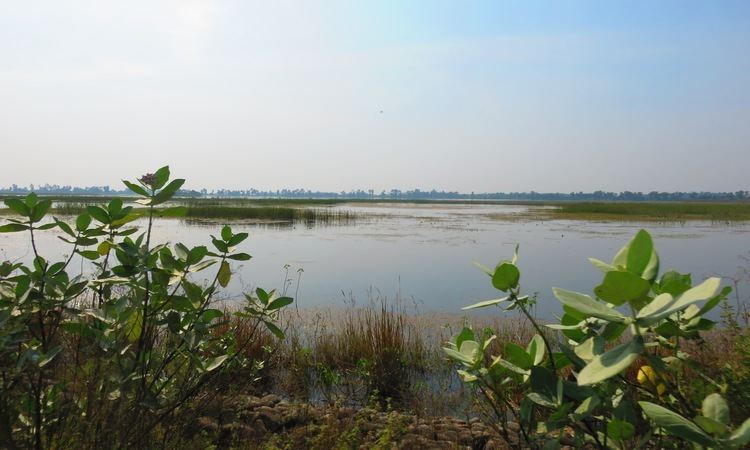Surface elevation 197 m Length 1.6 km Outflow location Banganga River | Primary inflows Primary outflows Banganga River Area 225 ha Width 1.4 km Inflow source Banganga River | |
 | ||
Cities | ||
The Jagdishpur Reservoir is a reservoir in Jahadi Village Development Committee, Kapilvastu District, Nepal. With a surface area of 225 ha (556 acres), it is the largest reservoir in the country and an important wetland site. It is situated at an altitude of 197 m (646 ft). The maximum water depth varies between 2 m (6.6 ft) in the dry season and 7 m (23 ft) in the monsoon season.
Contents
Map of Jagdishpur Reservoir, Kapilvastu 32800, Nepal
The Jagdishpur Reservoir is listed on the Ramsar List of Wetlands of International Importance, as defined by the Ramsar Convention.
HistoryEdit
The Jagdishpur Reservoir was constructed in the early 1970s for irrigation purposes. It is fed by a canal from the nearby Banganga River, which drains the Chure Hills. The reservoir is surrounded by cultivated land and a few smaller lakes which serve as a buffer zone for bird movement. In 2003, the reservoir was declared a Ramsar site. Despite this, its birds and other fauna have not yet been studied in great detail.
FaunaEdit
The silt and nutrients deposited in the reservoir favour the growth of reed beds, which provide shelter for several endangered species. The habitat of the reservoir and its surroundings is important for resident, wintering and migrating wetland birds, comprising 45 different bird species. Five of these are globally threatened species. The surrounding cultivated land also provides habitat for a large numbers of birds. Some of the notable species documented in the area include:
Also 18 species of fish, nine of herpetofauna and six mammalian species have been documented in and around the reservoir.
